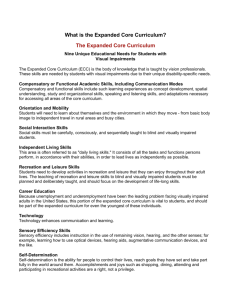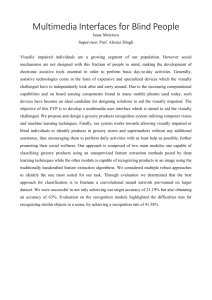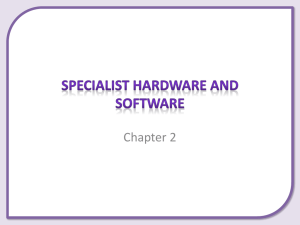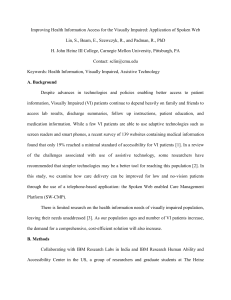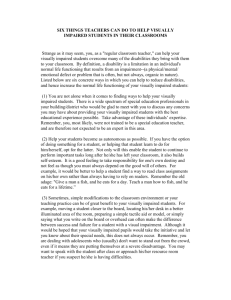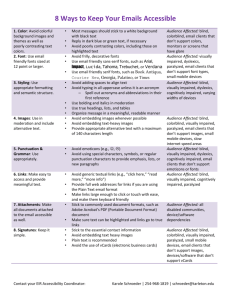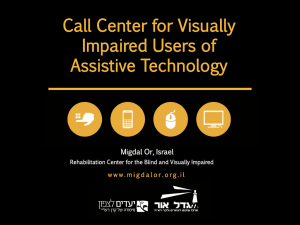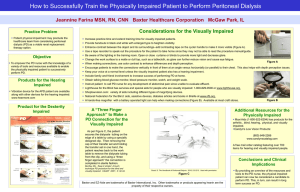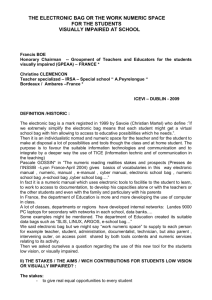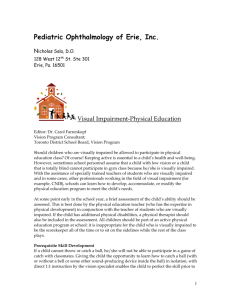Assistive Technology
advertisement
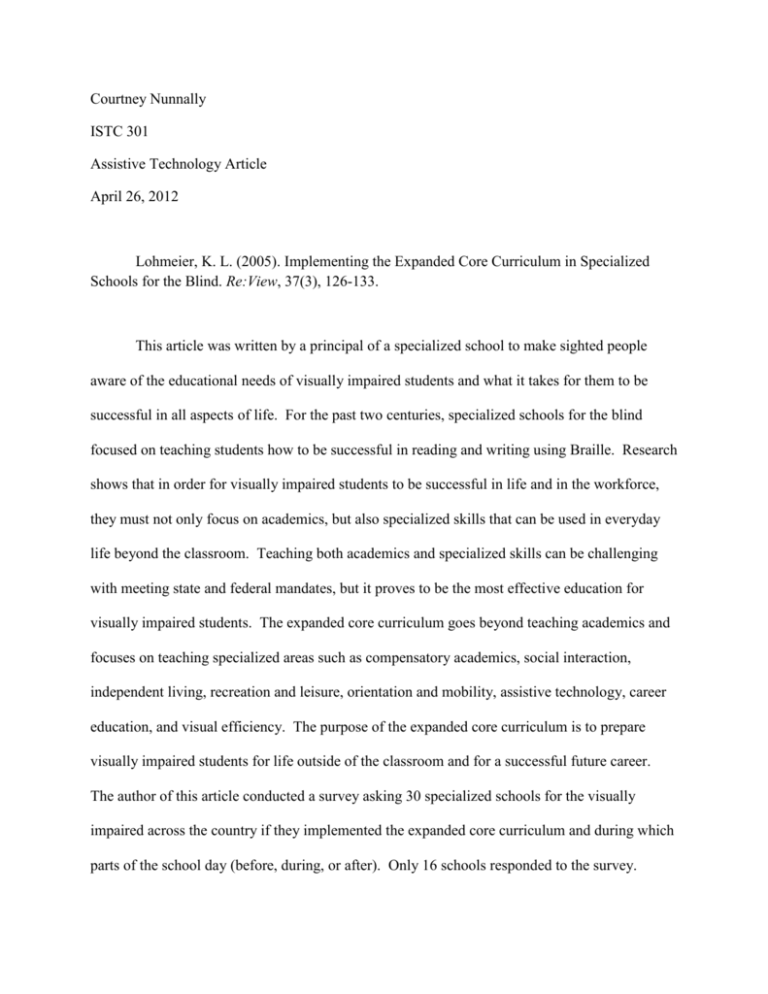
Courtney Nunnally ISTC 301 Assistive Technology Article April 26, 2012 Lohmeier, K. L. (2005). Implementing the Expanded Core Curriculum in Specialized Schools for the Blind. Re:View, 37(3), 126-133. This article was written by a principal of a specialized school to make sighted people aware of the educational needs of visually impaired students and what it takes for them to be successful in all aspects of life. For the past two centuries, specialized schools for the blind focused on teaching students how to be successful in reading and writing using Braille. Research shows that in order for visually impaired students to be successful in life and in the workforce, they must not only focus on academics, but also specialized skills that can be used in everyday life beyond the classroom. Teaching both academics and specialized skills can be challenging with meeting state and federal mandates, but it proves to be the most effective education for visually impaired students. The expanded core curriculum goes beyond teaching academics and focuses on teaching specialized areas such as compensatory academics, social interaction, independent living, recreation and leisure, orientation and mobility, assistive technology, career education, and visual efficiency. The purpose of the expanded core curriculum is to prepare visually impaired students for life outside of the classroom and for a successful future career. The author of this article conducted a survey asking 30 specialized schools for the visually impaired across the country if they implemented the expanded core curriculum and during which parts of the school day (before, during, or after). Only 16 schools responded to the survey. Mostly all of the schools offer some instruction is each of the eight expanded core areas throughout the school day. A good percentage of the schools go beyond the school day to offer instruction mainly in the areas of social interaction, independent living, and recreation and leisure. The author of this article says she hopes that in the future all areas of the curriculum and instruction will be spread throughout the entire day because learning that goes on beyond the classroom is most beneficial for visually impaired students. The goal is to not only teach visually impaired students academics, but to make them productive members of society.

